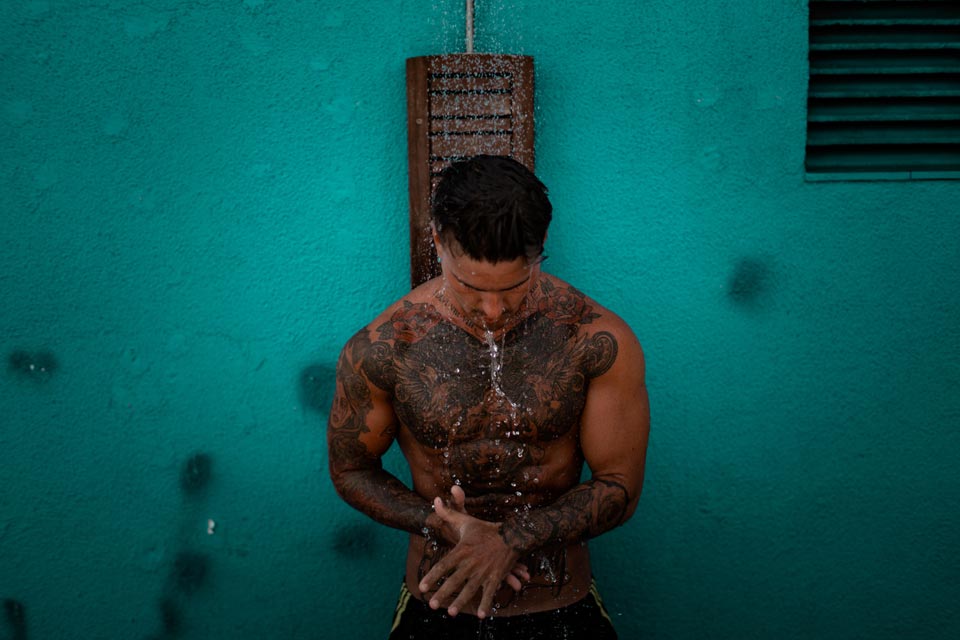The male reproductive system is made up of a variety of sex organs that are involved in human reproduction. These organs are situated both inside the pelvis and external to the body.
The primary male sexual organs are the penis and testicles, which secrete sperm and semen that, during sexual activity, fertilise an ovum in the female’s body. The fertilised ovum (zygote) then grows into a foetus, birthed as a new-born baby.
This article will focus on the anatomy, function, and development of the male reproduction system. After all, being a male, it wouldn’t hurt to educate yourself about your body and its function, so without further ado, let’s dive in!
Table of contents:
- What is the purpose of the male reproductive system?
- What are the external components of the male reproductive anatomy?
- What do the internal components of the male reproductive anatomy consist of?
- What Is the Function of the Male Reproductive System?
- Types of Penises
- Can a guy experience menopause?


What is the purpose of the male reproductive system?
The male reproductive system‘s organs are designed to carry out the following tasks:
- To produce, store, and discharge sperm (male reproductive cells) and lubricant (semen).
- To release sperm during intercourse into the female reproductive system.
- To create and release the sex hormones necessary to sustain the male reproduction system in men.
What are the external components of the male reproductive anatomy?
Most of the male reproductive system is positioned outside the body, in contrast to the female reproductive system. The penis, testicles, and scrotum are examples of these exterior structures.
Penis:
This refers to the male organ that is used during sexual activity. It has three sections: the root, which connects to the abdominal wall; the body; and the glans, the cone-shaped portion at the tip of the penis. The foreskin, a loose coating of skin, covers the glans, also known as the tip of the penis.
Sometimes, during a surgery known as circumcision, this skin is removed. The head of the penis houses the entrance of the urethra, the tube which carries urine and semen. Numerous delicate nerve endings may also be found in the glans of the penis.
The penis has three circular chambers that are arranged in a cylinder-shaped body. Special tissue that resembles a sponge is used to create these chambers. When the guy is sexually aroused, the tissue’s millions of big gaps fill with blood.
The penis gets hard and erect as it fills with blood, allowing for penetration for sexual activity. To allow variations in penile size during an erection, the skin of the penis is flexible and elastic.
When a man experiences sexual climax (orgasm), semen, which includes sperm (reproductive cells), is discharged (ejaculated) from the end of the penis. Only semen can be ejaculated during an orgasm because the penis prevents urine from flowing out of the urethra when it is erect.
Scrotum:
The skin sac that hangs loosely beneath and behind the penis is known as the scrotum. It also houses a large number of nerves and blood arteries in addition to the testicles (also known as testes).
For the testicles, the scrotum serves as a “climate control system.” The testes need to be just a little bit colder than body temperature for proper sperm production. In order to move the testicles nearer to the body for warmth or further away from the body for cooling, certain muscles in the scrotum’s wall must tighten and relax.
Testes (or testicles):
These are two oval organs located in the scrotum that are roughly the size of big olives and are connected at each end by a structure known as the spermatic cord. Men often have two testicles.
The testes are where sperm and testosterone, the main hormone involved in the male sex, are produced. Seminiferous tubules are coiled bundles of tubes that are found inside the testes. It is through these tubes that sperm cells are created.


What do the internal components of the male reproductive anatomy consist of?
The following are the accessory organs, often known as the internal organs of the male reproductive system:
Epididymis:
Each testicle has a long, coiled tube called the epididymis that lies there. Sperm cells generated in the testes are transported and stored by it. Due to the immaturity and inability to fertilize the sperm that release from the testes, the epididymis is also responsible for maturing the sperm. Contractions push the sperm into the vas deferens during sexual stimulation.
Deferens Vas:
A lengthy, muscular tube called the vas deferens extends from the epididymis across the pelvic cavity and ends right behind the bladder.
In order to prepare for ejaculation, the vas deferens transfer mature sperm to the urethra, the tube which transports pee or sperm to the outside of the person’s body.
Ejaculatory Ducts:
The vas deferens and the seminal vesicles combine to generate these. The urethra receives the ejaculatory duct discharge.
Urethra:
The tube connecting the bladder to the exterior of the body to pass urine is known as the urethra. When a male experiences orgasm, it also serves the added purpose of ejaculating semen in males.
Only semen may be ejaculated during orgasm when the penis is erect during intercourse because the passage of urine from the urethra is obstructed.
Seminal vesicles:
The seminal vesicles, which resemble sac-like pouches, connect to the vas deferens just above the bladder’s base.
Fructose, some fluid rich in sugar produced by the seminal vesicles, gives sperm a supply of energy to assist them in migrating.
The majority of a man’s ejaculatory fluid, often known as his ejaculate, is made up of fluid from his seminal vesicles.
Prostate gland:
The prostate gland is a walnut-sized organ that is situated in front of the rectum beneath the urine bladder. The ejaculate receives extra fluid from the prostate gland.
The sperm are also fed by the prostate secretions. The core of the prostate gland is where the urethra is located, which transports the ejaculate to be released after an orgasm.
Bulbourethral glands:
These tiny organs, sometimes known as Cowper’s glands, are situated just under the prostate gland on the sidewalls of the urethra. Clear, slick fluid is produced by these glands and flows directly into the urethra. This liquid is used to lubricate the urethra and balance any acidity that could be present as a result of leftover pee drops.


What Is the Function of the Male Reproductive System?
Hormones are molecules that control the activity of several various types of cells or organs, and they are essential to the functioning of the complete male reproductive system. Follicle-stimulating hormone, luteinizing hormone, and testosterone are the main hormones that affect the male reproductive system.
Spermatogenesis (the process of making sperm) requires the synthesis of follicle-stimulating hormone, and luteinizing hormone boosts the creation of testosterone, which also is required for spermatogenesis.
Male features such as muscle mass and strength, fat distribution, bone mass, the development of facial hair, voice changes, and sexual desire are all influenced by testosterone.


Types of Penises
The penis can differ widely from person to person, just as any other body component might. People frequently notice variations in penises’ dimensions and appearance.
Penises can be flaccid or erect, which alters their lengths and girths. The base-to-head ratio may be measured by certain persons. People will each have their own preferences, and there is no one size that is superior to others. The size of the penis is not the only element that influences sexual compatibility.
Some penises can be straight when they’re erect, whereas others can curve. Penile curvature is common, can hardly be unpleasant, and often does not make penetration more problematic. In certain instances, the receiving partner may even find penile curvature to be more enjoyable.
There may or may not be a foreskin on certain people’s penis. In a surgery known as circumcision, the foreskin may be surgically removed in certain people.
Puberty
Increased gonadotropin secretion during puberty causes the testes to produce more sex steroids. Male secondary sexual features emerge as a result of increased testosterone release from the testes throughout puberty. Among the secondary sex traits of men are:
- Body hair growth, including pubic, chest, stomach, and underarm hair.
- Development of facial hair.
- Voice becoming deeper and the larynx (Adam’s apple) growing larger
- Increased height; on average, adult men are taller as compared to adult women.
- Heavier bone structure and skull.
- Increased strength and muscular development.
- Shoulders and chest that are broader than the hips.
- Oil and sweat gland secretions are increased.
The eccrine sweat glands and sebaceous glands become more active as a result of secondary development, and the skin around the scrotum darkens.


Can a guy experience menopause?
The term “menopause” refers to the discontinuation of a woman’s regular menstrual cycle. Hormone production variations in women are a sign of this. The inability to conceive children after menopause is among the most significant changes for a woman. In contrast to the ovaries, the testes retain their capacity to produce hormones. A healthy guy could be able to produce sperm far into his 80s or beyond.
On the other hand, slight alterations in the way the testes operate can occur as early as age 45 to 50 and more noticeably around age 70.While some men may experience decreased hormone production earlier on, many men’s hormone production may continue to be normal until old age. This may occasionally be the effect of a disease like diabetes.
It’s uncertain if symptoms like exhaustion, weakness, sadness, or impotence are caused by declining testicular function.
Does “male menopause” have a cure?
The symptoms of low testosterone, such as sadness, exhaustion, and a loss of interest in sex, maybe lessened with hormone replacement treatment. However, replenishing male hormones may worsen atherosclerosis (toughening of the arteries), as well as prostate cancer and atherosclerosis, if done regularly.
Before beginning hormone replacement medication, you should have a thorough medical examination and blood testing done. How many middle-aged men could gain from hormone replacement treatment is still a subject of much debate. Discuss all the benefits and drawbacks of this therapy with your healthcare physician to determine which is the best choice for you.


Conclusion
There are several internal and exterior organs that make up the male reproductive system. The testes, penis, scrotum, and epididymis are among the external organs. The prostate, bulbourethral gland, seminal vesicles, and spermatic cord are among the internal organs.
Together, these organs support sexual activity and reproduction. Specifically, this system makes sex hormones start puberty and makes sperm production and transportation possible.
It’s crucial to understand the structure and purpose of the penis if you want to stay healthy. Any changes in the penis’s look, feeling, or functionality may point to a medical problem that has to be addressed.
You may also be interested in:
